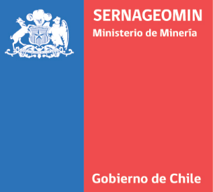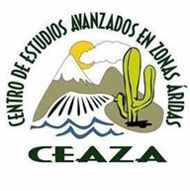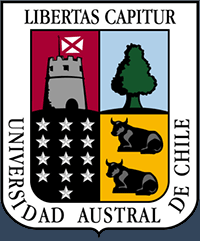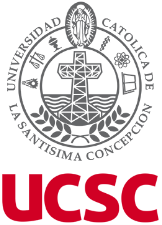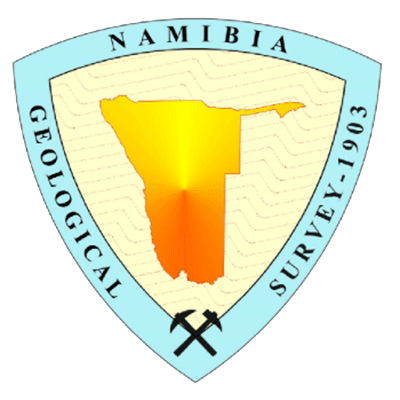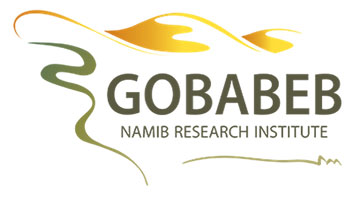Project ended after 2nd Phase
Climate History: Miocene to Recent Precipitation History of the Atacama and Namib Deserts
Research areas: Geology and Paleontology
Principal investigators: Prof. Dr. Martin Melles, Dr. Volker Wennrich
Project Info: Phase 2
Paleoclimate Proxies: The primary goal of this subproject is to obtain continuous long term (Quaternary-Miocene) paleoclimatic/environmental records from the hyperarid core of the Atacama Desert, which is mostly situated in the Coastal Cordillera, which are currently lacking.
Background: Regional mid to late Pleistocene climatic records exist from lake sediments in the Bolivian Altiplano (Fritz et al., 2007) and from near-shore to distal marine drill-cores (Ho et al., 2012; Lamy et al., 1998; Lamy et al., 2000), all of which are >400 km away from the study area, crossing steep climatic gradients (Houston, 2006a; Houston and Hartley, 2003). More proximal records cover the Holocene to late last glacial (Betancourt et al., 2000; Díaz et al., 2012; Gayo et al., 2012a, 2012b; Grosjean et al., 2001; Maldonado et al., 2005; Moreno et al., 2009; Quade et al., 2008). Various records from the Central Depression (Hartley and Chong, 2002; Kirk-Lawlor et al., 2013; Rech et al., 2010; Sáez et al., 2012) cover the Miocene, but mainly record runoff from the Precordillera to the East, rather than local/regional conditions.
The goal is to obtain and investigate sediments (covering the last >10 Ma) from endorheic basins in the Coastal Cordillera. The basins to be studied are located along a latitudinal transect across the hyperarid core of the Atacama and are assumed to have recorded local and regional climate variations on different timescales. The results of the project shall primarily shed light on the onset of hyperaridity, on the timing and frequency of intervening pluvial phases, and on the correlation of the local climate history to other regional and global climate records. Most of these basins were formed by blocking of drainage by fault movement, and thus have recorded the tectonic history of the study area (C05). The chronologies of the sediment records are expected to tie the inherently coarse chronology of biological (B01 to B04) and landscape evolution (C01 to C05) to climate records of higher temporal resolution. Fossil pollen and phytolith assemblages in the sediments shall provide information on past vegetation dynamics in the central Atacama and its climatic drivers (B01). Sedimentation rates, grain-sizes and mineralogy of the cores shall help to reconstruct modes of weathering and erosion in the catchments (C01, C02, C03). Dating of the sediment records in A02 will crucially benefit from methodological developments in cosmogenic nuclide, organic compound, U-series disequilibrium, and luminescence dating (D01, D02, D04, and D05). Furthermore, the results of the dating techniques to be developed within the CRC shall be cross-checked and validated by applying well-established independent absolute (Ar/Ar and U/Pb on volcanic ashes) and relative (palaeomagnetism, tephrochronology) dating techniques on amenable strata.
Phase 1
Paleoclimate Proxies: Miocene to Recent Precipitation History of the Atacama Desert
Research areas: Geology and Paleontology
Principal investigators: Prof. Dr. Martin Melles, Dr. Volker Wennrich
The primary goal of this subproject is to provide continuous long-term (Quaternary-Miocene) information concerning the climatic/environmental history of the hyperarid core of the Atacama Desert that is currently lacking. To achieve this goal we want to core and investigate sediments from endorheic basins in the Coastal Cordillera, which cover the last >10 Ma. Most of these basins were formed by blocking of drainage by fault movement, and thus have recorded the tectonic history of the study area (C5).
They contain clastic sediments (presently dominated by silt) from sporadic riverine input, with accompanying authigenic minerals. Salars, which also occur in the study area, will not be targets in the first phase. The chronologies of the sediment records are expected to tie the inherently coarse chronology of biological (B1 to B4) and landscape evolution (C2 to C5) to climate records of higher temporal resolution. Fossil pollen and phytolith assemblages in the sediments shall provide information on past vegetation dynamics in the central Atacama and its climatic drivers (B1), and thus on potential migration paths of insects (B2). Sedimentation rates, grain-sizes and mineralogy of the cores will be used to reconstruct the chronology and the modes of weathering and erosion in the catchments (C2, C3).
Publications
Project A2 - Publications
Articles
Vargas-Machuca, B., Wennrich, V., Melles, M., 2024.
Regional phytoliths from the Coastal Cordillera of the Atacama Desert, Chile, and their potential for paleoecological reconstructions.
Quaternary International. 1 - 11.
Wennrich, V., 2024.
Late Pleistocene to modern precipitation changes at the Paranal clay pan, central Atacama Desert.
Global and Planetary Change. 233, 1 - 22.
Reyers, M., Fiedler, S., Ludwig, P., Böhm, C., Wennrich, V., Shao, Y., 2023.
On the importance of moisture conveyor belts from the tropical eastern Pacific for wetter conditions in the Atacama Desert during the mid-Pliocene.
Climate of the Past. 19 (2), 517 - 532. DOI: 10.5194/cp-19-517-2023.
Wennrich, V., 2023.
Late Pleistocene to modern precipitation changes at the Paranal clay pan, central Atacama Desert.
Zenodo. 1 - 63. DOI: 10.5880/CRC1211DB.68.
Blanco, B., Yogeshwar, P., Tezkan, B., Mörbe, W., Díaz, D., Farah, B., Buske, S., Ninnemann, L., Diederich, J., Wennrich, V., 2022.
Exploration of sedimentary deposits in the Atacama Desert, Chile, using integrated geophysical techniques.
Journal of South American Earth Sciences. 115, 32767 - 32767. DOI: https://doi.org/10.1016/j.jsames.2022.103746.
Diederich, J., Wennrich, V., Bao, R., Büttner, C., Bolten, A., Brill, D., Buske, S., Campos, E., Fernández-Galego, E. ., Gödickmeier, P., Ninnemann, L., Reyers, M., Ritter, B., Ritterbach, L., Rolf, C., Scheidt, S., Dunai, T., Melles, M., 2019.
A 68ka precipitation record from the hyperarid core of the Atacama Desert in Northern Chile.
Global and Planetary Change. 184, 10305 - 10305.
Ritter, B., Binnie, S., Stuart, F., Wennrich, V., Dunai, T., 2019.
Evidence for multiple Plio-Pleistocene lake episodes in the hyperarid Atacama Desert.
Quaternary Geochronology. 44, 1 - 12. DOI: 10.1016/j.quageo.2017.11.002.
Ritter, B., Stuart, F., Binnie, S., Gerdes, A., Wennrich, V., Dunai, T., 2019.
Neogene fluvial landscape evolution in the hyperarid core of the Atacama Desert.
Nature Scientific Reports. 1 - 16.
Ritter, B., Wennrich, V., Medialdea, A., Brill, D., King, G., Schneiderwind, S., Niemann, K., Fernández-Galego, E. ., Diederich, J., Rolf, C., Bao, R., Melles, M., Dunai, T., 2019.
Climatic fluctuations in the hyperarid core of the Atacama Desert during the past 215 ka.
Nature Scientific Reports. 1 - 13.
Ritter, B., 2019.
Dissertation B. Ritter 2019: Landscape and climate evolution in arid to hyperarid climates with special focus on the Atacama Desert.
Universitäts- und Stadtbibliotheke Universität zu Köln. 1 - 161.
Event Papers
Vargas-Machuca, B., 2021.
Microwave Digestion Technique.
Proc. of Subproject A02, March 08 - 08, 2021, University of Cologne, Geology and Mineralogy Institute., 1 - 4.
Ritter, B., Dunai, T., Stuart, F., Wennrich, V., Melles, M., 2019.
Shoreline dating of the former Quillagua-Llamara Lake, N-Chile – Implications of global teleconnections to the hydrology of the Atacama Desert.
Proc. of EGU General Assembly 2016, April 17 - 22, 2016, Vienna, 1 - 1.
Ritter, B., Binnie, S., Stuart, F., Gerdes, A., Wennrich, V., Dunai, T., 2019.
Neogene fluvial landscape evolution in the hyperarid core of the Atacama Desert.
Proc. of EGU General Assembly 2018, April 08 - 13, 2018, Vienna, 1 - 1.
Data
Project A2 - Research Data
Wennrich, V., 2024.
Downhole logging data of holes PAR22.
CRC1211 Database (CRC1211DB).
Wennrich, V., 2024.
Magnetic susceptibility and colour data of core PAR22.
CRC1211 Database (CRC1211DB).
Wennrich, V., 2024.
Magnetic susceptibility of core PAR-1.
CRC1211 Database (CRC1211DB).
Wennrich, V., Mantke, N., Sevinç, F., 2024.
XRF scanning results of core PAR-1.
CRC1211 Database (CRC1211DB).
Wennrich, V., Walber-Hellmann, K., Opitz, S., 2024.
Element concentrations of core PAR-1.
CRC1211 Database (CRC1211DB).
Wennrich, V., Mantke, N., 2024.
TS, TC, TN TOC, and TIC of core PAR-1.
CRC1211 Database (CRC1211DB).
Wennrich, V., Walber-Hellmann, K., 2024.
Bulk mineralogy data of core PAR-1.
CRC1211 Database (CRC1211DB).
Wennrich, V., Jaeschke, A., Rethemeyer, J., 2024.
N-alkane and PLFA data of core PAR-1.
CRC1211 Database (CRC1211DB).
Wennrich, V., Carballeira, R., 2024.
Diatom and phytolith data of core PAR-1.
CRC1211 Database (CRC1211DB).
Wennrich, V., Reyers, M., Böhm, C., 2024.
WRF-model derived daily precipitation data Paranal.
CRC1211 Database (CRC1211DB).
Wennrich, V., 2024.
Grain-size data of core PAR-1.
CRC1211 Database (CRC1211DB).
Nienhaus, H., Melles, M., Wennrich, V., 2023.
Results from the analyses of the geological samples of the Aurus Clay Pan, Namibia.
CRC1211 Database (CRC1211DB).
Diederich, J., 2020.
Core description of PAG cores.
CRC1211 Database (CRC1211DB).
Diederich, J., 2020.
Core logs of PAG drilling.
CRC1211 Database (CRC1211DB).
Diederich, J., 2020.
Composite data Huara clay pan.
CRC1211 Database (CRC1211DB).
Diederich, J., 2019.
Composite data PAG.
CRC1211 Database (CRC1211DB).
Diederich, J., 2019.
Huara_submission to GPC.
CRC1211 Database (CRC1211DB).
Ritter, B., 2019.
Neogene fluvial landscape evolution in the hyperarid core of the Atacama Desert.
CRC1211 Database (CRC1211DB).
Ritter, B., 2019.
Supplementary Dataset Ritter et al. 2019.
CRC1211 Database (CRC1211DB).
Ritter, B., 2019.
Supplementary Dataset Ritter et al. 2018.
CRC1211 Database (CRC1211DB).
Ritter, B., 2019.
Ritter et al. 2017 Quaternary Geochronology Supplementary.
CRC1211 Database (CRC1211DB).
Blanco, B., Wennrich, V., Yogeshwar, P., 2019.
Transient Electromagnetic data of PAG and PARANAL claypan..
CRC1211 Database (CRC1211DB).
















